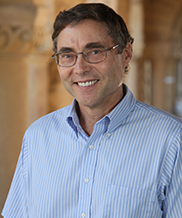Measuring Where Learning Happens
Carl Wieman, Measuring Where Learning Happens. A crucial new area of study involves understanding the teaching and learning of science, engineering and technology at the post secondary level. Evidence based assessments require controlled experiments and rigorous measurements of results. I will discuss who is doing such work, what they are finding, how it connects with broader cognitive psychology research, and how it has the potential to dramatically improve the effectiveness ofhigher education and adult learning.
 Dr. Carl Wieman holds a joint appointment as Professor of Physics and of the Graduate School of Education at Stanford University. He has done extensive experimental research in both atomic physics and science education at the university level. Wieman served as founding chair of the Board of Science Education of the National Academy of Sciences and was the founder of PhET which provides online interactive simulations that are used 100 million times per year to learn science. Wieman directed the science education initiatives at the Universities of Colorado and British Columbia which carried out large scale change in teaching methods across university science departments. He served as Associate Director for Science in the Office of Science and Technology Policy in the White House in 2010-12. Wieman has received numerous awards recognizing his work in atomic physics, including the Nobel Prize in physics in 2001 for the first creation of a Bose-Einstein condensate. He has also studied student learning and problem solving and the comparative effectiveness of different methods for teaching science. The education work has been recognized with a number of awards including the Carnegie Foundation University Professor of the Year in 2004, the Oersted Medal for physics education, and a lifetime achievement award from the National Science Teachers Association.
Dr. Carl Wieman holds a joint appointment as Professor of Physics and of the Graduate School of Education at Stanford University. He has done extensive experimental research in both atomic physics and science education at the university level. Wieman served as founding chair of the Board of Science Education of the National Academy of Sciences and was the founder of PhET which provides online interactive simulations that are used 100 million times per year to learn science. Wieman directed the science education initiatives at the Universities of Colorado and British Columbia which carried out large scale change in teaching methods across university science departments. He served as Associate Director for Science in the Office of Science and Technology Policy in the White House in 2010-12. Wieman has received numerous awards recognizing his work in atomic physics, including the Nobel Prize in physics in 2001 for the first creation of a Bose-Einstein condensate. He has also studied student learning and problem solving and the comparative effectiveness of different methods for teaching science. The education work has been recognized with a number of awards including the Carnegie Foundation University Professor of the Year in 2004, the Oersted Medal for physics education, and a lifetime achievement award from the National Science Teachers Association.